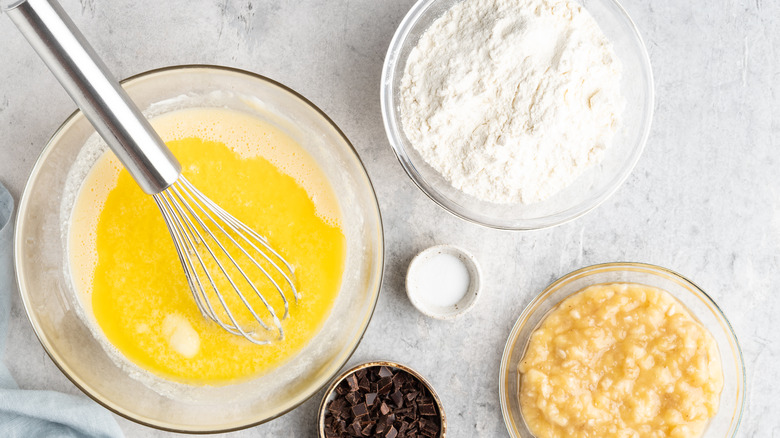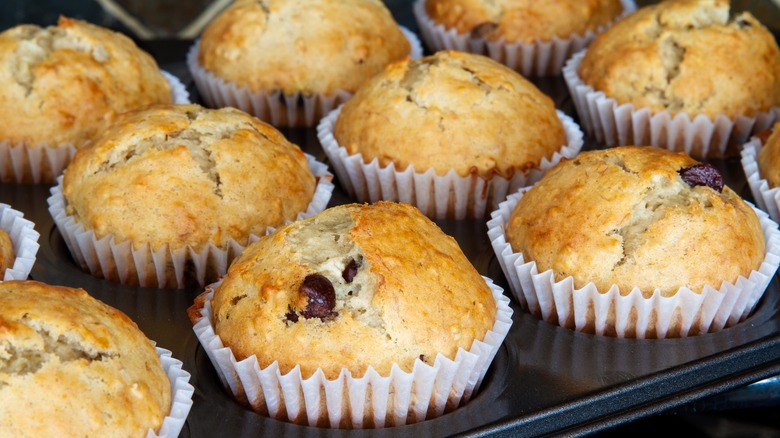Do You Really Need To Separate Wet And Dry Ingredients?
They say you're either a cook or a baker — and there's a good reason for that. It seems to come down to a personality trait. Baking is a science and comes with many rules, whereas cooking is all about creativity and improvisation, BakingHow notes. Of course, many do both, but most people usually have a penchant for one.
There is a myriad of commandments in the baking bible, and most have good reasons behind them. When it comes to many recipes, there's always that step to put all the wet ingredients in one mixing bowl and all the dry ingredients in another. You've probably been tempted to skip this stage altogether at some point. You may even often pause and wonder why as you grab two bowls from the cupboard. So, do you really need to separate the two sets of ingredients when baking?
If you're a rule follower fluent in the laws of baking, you probably already know the answer, but you may not know the why behind it. Yet, creative cooks and rebels out there may see it as another step to slow them down and another dish to wash. So, is keeping them separate a must?
Three reasons why
It sure is if you want to maintain the integrity of the final baked good. Keeping the two separate allows you to incorporate all the components of each thoroughly. Once combined, the science of baking begins, per KitchenAid. Most goods contain a leavening agent, such as baking soda or powder. Combining the wet and dry ingredients activates the leavener, which releases gas and causes the dough to rise. If the leavener is not evenly dispersed, the height of the baked good won't be either.
This reaction is why another baking rule is also important and always listed as the first step in a recipe — preheating the oven before you start mixing ensures you're not standing around with an activated leavener waiting for the oven to reach the correct temperature. You want that chemical reaction to occur while it's in the oven, not on the counter. Otherwise, you'll end up with dome-less muffins and hockey puck cookies.
A final reason to keep them separate is for texture purposes. Flour usually contains lumps and it's much harder to break them up once you pour in the wet ingredients. This may lead to over-mixing as you try to blend everything into a smooth batter. Over-mixing strengthens the gluten in the flour and results in a tougher texture of the final product (via King Arthur Baking Company).

